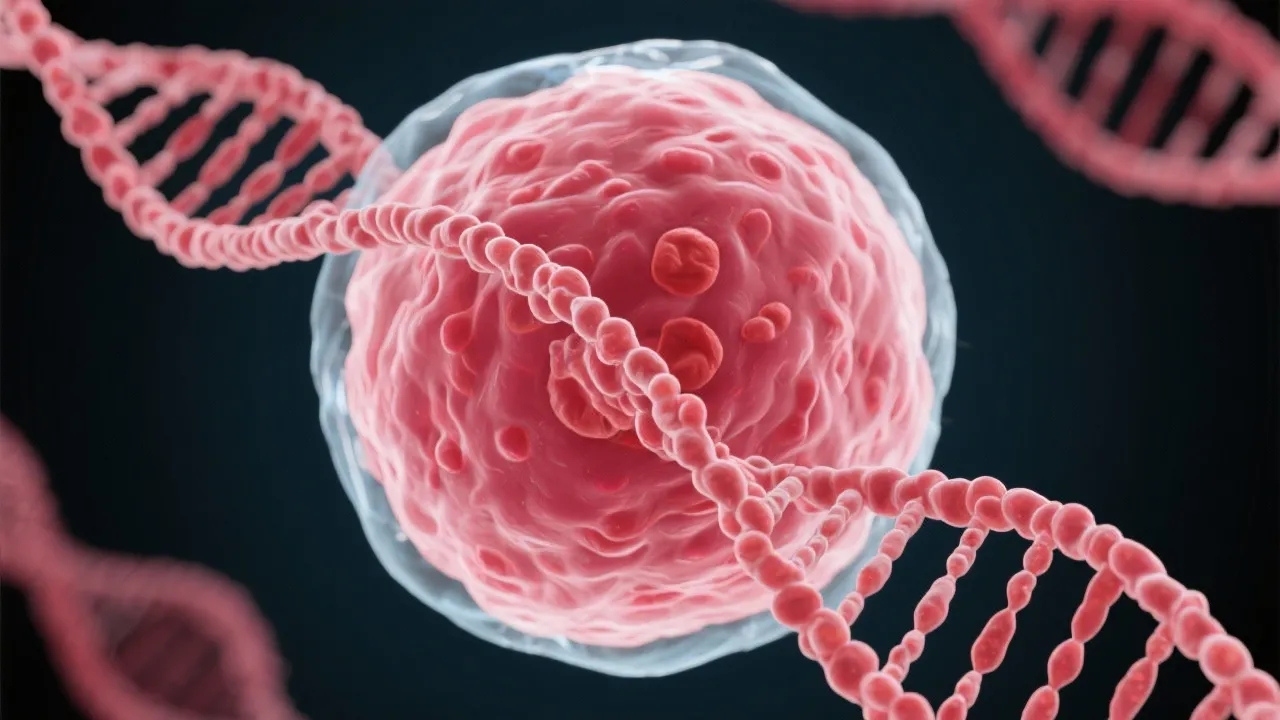Cyp Breast Cancer: Understanding its Implications
This comprehensive guide explores the connection between Cyp and breast cancer, elucidating its impact on treatment and prognosis. Cytochrome P450 (Cyp) enzymes play a crucial role in drug metabolism and carcinogen activation. Dissecting how these enzymes influence breast cancer could pave the way for better-targeted therapies. Through expert insights, the article emphasizes the necessity of genetic profiling for effective breast cancer management.

Understanding Cyp and Its Role in Breast Cancer
Breast cancer remains one of the leading health concerns globally, notable for its prevalence and the complexity of its treatment. At the heart of its biological intricacies is Cytochrome P450, often abbreviated as Cyp. This family of enzymes is instrumental in drug metabolism and the bioactivation of procarcinogens, making it a pivotal player in breast cancer progression and treatment. Recent advancements in molecular biology and pharmacogenetics have further illuminated this relationship, revealing the fine-tuned interactions between Cyp enzymes and breast cancer therapies.
The Science Behind Cyp Enzymes
Cytochrome P450 enzymes are involved in the oxidative metabolism of various substrates in the body. They represent a superfamily of enzymes, with over 50 distinct members identified in humans. The primary function of Cyp enzymes is to catalyze reactions that introduce an oxygen atom into organic substrates, thereby transforming these substrates into more polar derivatives that can be easily excreted. Their ability to alter the activity and toxicity of both endogenous compounds and xenobiotics underscores their importance in cancer biology. Variations in Cyp enzyme activity, often due to genetic polymorphisms, can influence an individual's cancer susceptibility and response to therapy. For example, variations in the Cyp1A1 and Cyp1B1 genes have been associated with differences in metabolism of estrogens, which are known to play a critical role in breast cancer development.
Cyp and Breast Cancer: A Crucial Link
Recent studies have illuminated the role of Cyp enzymes in the metabolism of hormonal and chemotherapeutic agents used in breast cancer treatment. For instance, the efficacy of Tamoxifen, a common drug used in breast cancer therapy, is significantly influenced by Cyp2D6 enzyme genotype. This enzyme is responsible for converting Tamoxifen into its active metabolite, endoxifen, which exhibits more effective anti-estrogenic activity. Patients with certain Cyp2D6 polymorphisms, such as poor metabolizers, may not achieve optimal therapeutic levels of endoxifen, jeopardizing treatment outcomes. Understanding these interactions is crucial for tailoring personalized treatment plans. In light of this, there is an increasing emphasis on integrating Cyp genetic testing into clinical practice to guide treatment decisions.
Implications for Treatment and Prognosis
The impact of Cyp on treatment outcomes highlights the need for genetic profiling in breast cancer patients. Identifying specific Cyp polymorphisms can help predict drug metabolism efficacy and potential adverse reactions. For instance, besides Cyp2D6, other isoenzymes such as Cyp3A4 and Cyp2C9 have also been implicated in the metabolism of drugs used in breast cancer treatment, including those used in combination therapies. This precision approach not only optimizes therapeutic outcomes but also reduces the risk of drug toxicity. It facilitates more informed decisions in prescribing therapies, ensuring that patients receive medications that are metabolized effectively based on their unique genetic makeup. Moreover, the ability to predict treatment responses enables oncologists to avoid trial-and-error approaches, thus providing more timely interventions.
Expert Insights on Cyp in Breast Cancer
Industry experts emphasize the significance of integrating pharmacogenomics into routine breast cancer care. By mapping out genetic variations in Cyp enzymes, oncologists can better stratify patients and personalize therapeutic regimens, enhancing both efficacy and safety. For instance, beyond Tamoxifen, the metabolism of aromatase inhibitors, another class of hormonal therapies, may be modulated by the activity of different Cyp enzymes, further demonstrating the need for comprehensive genetic insights. In recent conferences and publications, specialists have discussed the promising potential of utilizing Cyp profiling not only to predict responses to treatment but also to avert adverse drug reactions that could complicate therapy or lead to treatment discontinuation. Ongoing research continues to investigate novel Cyp interactions and explore innovative methodologies to enhance our understanding of these complexities.
FAQs
What is the primary role of Cyp enzymes in breast cancer?
Cyp enzymes are vital in metabolizing hormones and chemotherapeutic drugs, influencing both cancer progression and treatment efficacy. Their activity shapes how drugs are processed in the body, significantly affecting therapeutic outcomes and patient responses.
How do Cyp genetic variations affect breast cancer treatment?
Genetic polymorphisms in Cyp enzymes can impact drug metabolism rates, affecting the potency and safety of cancer therapies like Tamoxifen. For example, variations can lead to rapid, slow, or non-metabolizer classifications, altering the overall effectiveness of treatment and the likelihood of side effects.
Why is genetic profiling important in managing breast cancer?
Genetic profiling helps in identifying Cyp variations, enabling personalized treatment plans that enhance efficacy and minimize adverse effects. By understanding an individual’s specific Cyp enzyme activity, healthcare providers can tailor drug selections that align with the patient's metabolic capacity.
Can Cyp enzyme activity be modified to improve treatment outcomes?
Research is ongoing to explore potential modifiers of Cyp enzyme activity. However, the current focus remains on genetic profiling to predict enzyme activity. Although some studies are investigating pharmacological agents or lifestyle factors that could potentially enhance or inhibit Cyp enzyme activity, clinical applications are still limited and require more robust evidence.
Clinical Applications and Ongoing Research
The integration of Cyp enzyme testing in clinical practice is gradually becoming more established. Research is continuously emerging, emphasizing the significance of pharmacogenomics. Many cancer centers are incorporating routine genetic testing to assess patients’ enzymatic profiles, particularly for those undergoing treatment with Tamoxifen and other hormonal therapies. Furthermore, the National Comprehensive Cancer Network (NCCN) recommends genetic testing for certain medications, ensuring standardized care and improved patient management strategies across various settings.
Moreover, ongoing studies are exploring novel therapeutic interventions, including the development of new drugs that are less dependent on Cyp metabolism or that can bypass genetic variations. Drug formulation strategies aimed at creating prodrugs that activate via alternative pathways or dosing regimens tailored for individuals can also contribute to better treatment adherence and outcomes.
One exciting area of research is the exploration of dietary and lifestyle modifications that can influence Cyp enzyme activity. Emerging evidence suggests that compounds found in fruits, vegetables, and herbal supplements may modulate the activity of specific Cyp enzymes. Such synergistic approaches can complement standard treatment regimens, potentially enhancing drug efficacy and reducing side effects.
As the understanding of the Cyp enzyme family expands, the clinical implications continue to unfold. Researchers are now also investigating potential roles for Cyp enzymes beyond drug metabolism, questioning whether they may influence tumor biology directly through pathways related to hormone metabolism and cell signaling. This evolving knowledge base holds promise for not only optimizing treatment strategies but also developing novel interventions aimed at early detection and prevention of breast cancer.
Conclusion
The intricate relationship between Cytochrome P450 enzymes and breast cancer underscores the necessity for personalized medicine. As research continues to unveil the complexities of Cyp's role, integrating these insights into clinical practice will be vital for advancing breast cancer treatment and improving patient outcomes. Personalized medicine, guided by genetic profiling, represents the future of effective breast cancer management. By tailoring treatments based on individual enzymatic activity, the healthcare community can aim for higher therapeutic efficacy while minimizing the risk for adverse effects, thus significantly enhancing the quality of care for breast cancer patients.
As we look ahead, the emphasis on patient-centered approaches, backed by comprehensive research, will be pivotal in changing the landscape of breast cancer management. Awareness and education regarding the potential of pharmacogenomics in routine care will empower both patients and clinicians, promoting collaborative efforts toward achieving better health outcomes and advancing the science behind breast cancer therapy.





